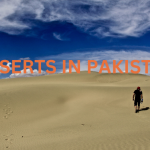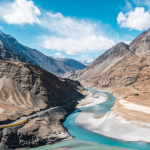“The Land of Giants”
When all at once I saw a crowd
A host of golden daffodils;
Beside the lake, beneath the trees,
Fluttering and dancing in the breeze.”
William Wordsworth
The Enchanting Deosai Plains: A Natural Wonder
Discover Deosai Plains, a hidden gem nestled in the heart of Pakistan. Located at an impressive altitude of over 4,000 meters, these plains are a pristine paradise of untouched wilderness. With its vast expanses of rolling meadows, crystal-clear Deosai lakes, and snow-capped peaks in the distance, Deosai Plains offers a breathtaking landscape that will leave you in awe.
In a Glimpse
The vast wilderness, abundant wildlife, altitude, assortment of flora and fauna, and intermittent weather ascribe uniqueness to the Deosai Plains of Skardu Valley.
Deosai, locally known as “Ghbiarsa” by Balti folks referring to it as “Summer’s Place,” is the best place to visit in summer. It is the second among the world’s highest plateaus, succeeding Changtang Tibetan Plateau.
This top natural attraction is between Kharmang, Astore, and Skardu, in the Gilgit Baltistan region, at 4114 meters above sea level. This high-altitude alpine plain was given the status of a National Park in 1993.
Deosai National Park covers a vast area of almost 3,000 Km² of uninhabited grassland surrounded by snow-clad peaks. Its diverse flora and fauna make it a top tourist attraction in the beautiful land of Pakistan.
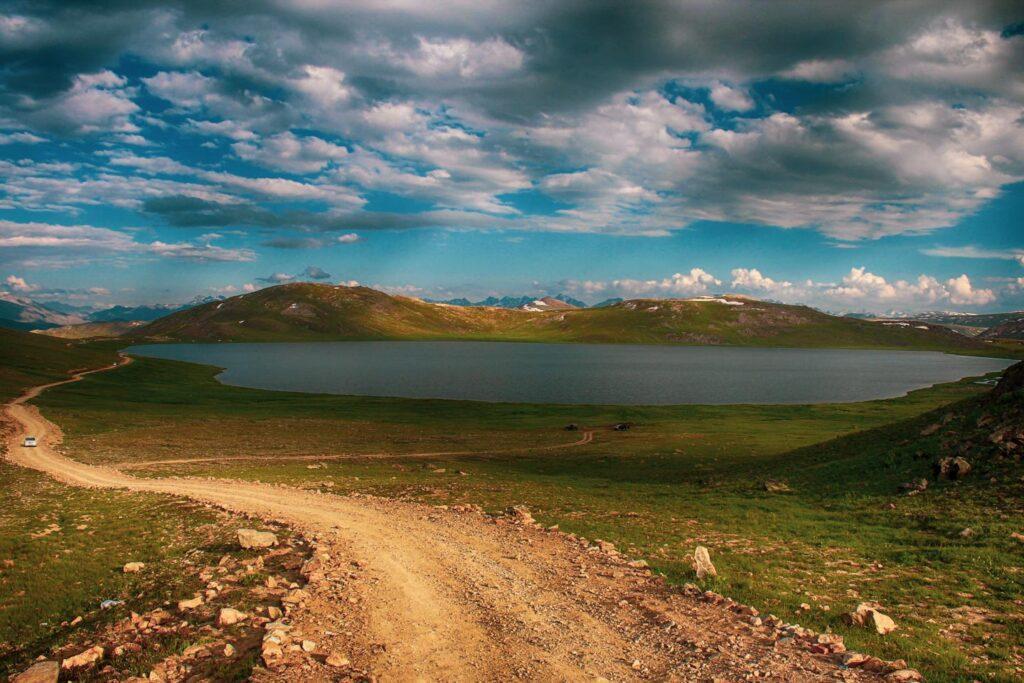
Accessing Deosai
Deosai is 30 km from Skardu city, 562 km from Islamabad, and accessible from different valleys of Gilgit Baltistan. The shortest route to reach Deosai is in its north, from Skardu, but it is accessible from Astore in its west and Galtari-Kharmang in its southeast. But the most popular itinerary is Astore-Deosai-Skardu, where tourists can explore the two principal valleys.
Route from Astore Valley via Chilum is 70 Km long and a bumpy 4-5 hours ride as the road condition is unsuitable for a car drive. However, driving on a jeep through the narrow gorges is lovely.
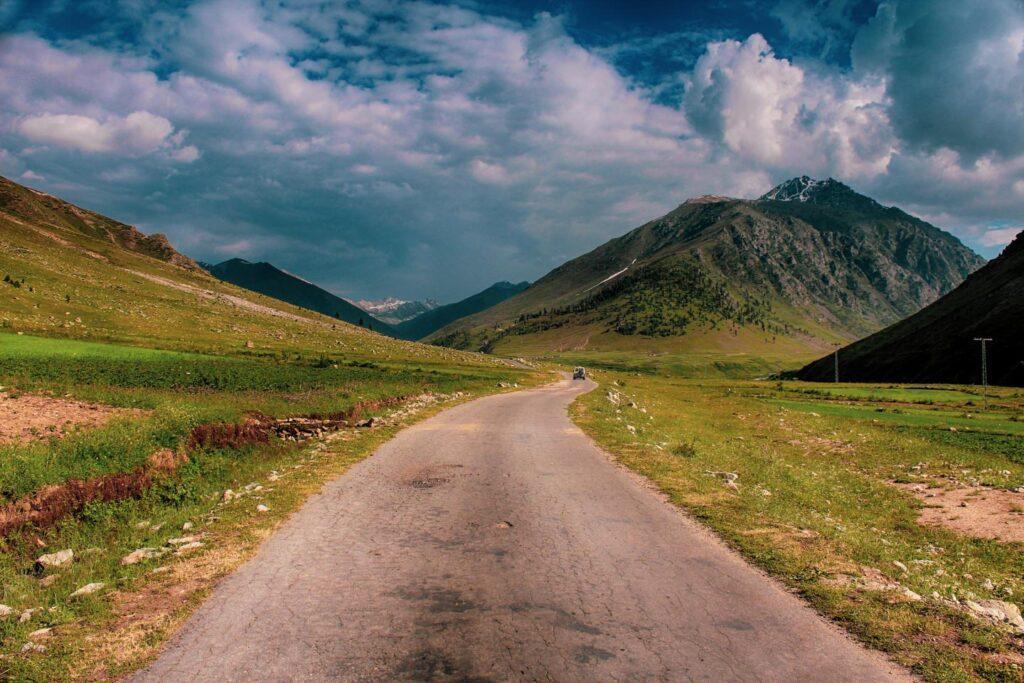
Best Time to Visit Deosai Plains
As the name “Ghbiarsa” suggests, the Deosai plains are a place to be visited in summer, covered with snow for most of the year. This factor rules out the possibility of permanent human habitation in the area. Tourism in the area is limited, and most tourists visit from June to September in the summer.
The Topography
Deosai top, at an altitude higher than the tree line, is distinguished for its ecological value and the rich flora and fauna it houses. In the western massif of the Himalayas, the Deosai plateau comprises flat but irregular plains with rolling hills and adjoining mountains.
Deosai is often referred to as the “Roof of the World” because of its high altitude, averaging over 4,000 meters (13,000 feet) above sea level. This elevation places it among the highest plateaus in the world, offering breathtaking, expansive views that seem to stretch out to the edge of the earth.
The topography contrasts with a neighboring landscape of steep mountains and narrow gorges. The diverse topography includes vast alpine meadows and arid stony patches.
Three critical river systems, Kala Pani, Shatung, and Bara Pani, furnish Deosai with significant watershed value. Kala Pani and Bara Pani contribute to forming the River Shigar. These factors, in combination, create high-altitude wetlands epitomized by Sheosar Lake at an altitude of 4250 meters above sea level.
The soil of the Deosai plains is severely eroded and coarse, mixed with gravel and stones of various types. Between mountains, the area characterizes deep soil with marshy vegetation.
The topography of the plateau influences its climate and the plant’s adaptability.

Flora and Fauna of Deosai
Deosai National Park is a place of rich biodiversity owing to its location, where two biogeographically located provinces in the Himalayan and Karakoram-Pamir highlands merge.
Deosai National Park has its OUV (outstanding universal value) due to its biodiversity conservation role, not for one critical species like the Brown Bear but a general collection of fauna species.
The park’s location in the western Himalayas, classified as an Endemic Bird Area by Birdlife International, is essential as a resting and breeding ground for internationally important residential and migratory birds.
Deosai hosts over one hundred types of resident and migratory birds. The park welcomes many migratory birds in summer, like gulls, geese, terns, plovers, shanks, sandpipers, Common Mergansers and Horned Lark.
Other birds in the park include The Goldfinch and Red-fronted Serin, the Rock Bunting, the golden eagle, the Eurasian sparrowhawk, the griffon vulture, snowcock, kestrels, and pheasants.
The waters of Deosai Plains are also home to the enormous-sized snow trout, which also serves as food for many migratory birds.
Like the fauna, the flora of Deosai is also brimming with variety and diversity. Hundreds of species of aromatic flowers growing here are a food source for wildlife and have great medicinal value.
The entire area is covered with a cornucopia of wildflowers in the spring and summer. You can witness an extensive variety of butterflies belonging to rare species hovering on the richly colored flowers.
In Deosai, the growth of around 342 plant species is reported. Some of the plant varieties are Golden Ragwort, Forget-Me-Nots, Pink Sedum, “Tumoro” (local name for wild Thyme), Gentian, Asian Bell Flower, Geranium, Scabious, Thistle, Monkshood, and many more.
Among many other plants used for medicinal value by locals, “Tumoro” is primarily used as herbal tea in Skardu and Astore.

Deosai National Park Wildlife
It is a constituent of the Conservation International Himalayan Biodiversity Hotspot. It has a rich variety of species, including red fox, Phia (Golden marmots), ibex, gray wolf, snow leopard, and the Ladakh urial.
Himalayan Brown Bear is unique to this region of the world, as Deosai National Park has the primary objective of its conservation, being the critically endangered species. Out of seven populations of brown bears in the Himalaya, Karakoram, and Hindukush ranges, the Deosai Plateau hosts the only stable population.
Activities at Deosai National Park
Experience the unforgettable charm of Deosai National Park animals, home to diverse wildlife. Marvel at the dazzling Sheosar Lake, where brown bears hunt fish in streams that zigzag through the plains. Witness butterflies gracefully kissing blossoms, vibrant flowers swaying in the chilly breeze, and golden eagles soaring across the clouds. Immerse yourself in the peculiar aroma of this enchanting park and discover the captivating wildlife that calls it home.
The park’s vastness offers several activities besides enjoying the serene, noise-free wilderness of the plain. Among several water bodies dotted in the garden, Sheosar Lake, reflecting the majestic mountain’s spectacular backdrop, is the most significant.
Bara Pani and Kaala Pani are the two streams that you have to cross to reach the lake. While Kaala Pani is shallow and is safe to travel in a jeep, Bara Pani has an old wooden bridge over it. A concrete bridge is now constructed over the river; however, traversing the swaying wooden bridge on foot, a musical river gushing below, is unique.
After crossing the bridge at Bara Pani, you can try fishing, as the river is home to several species of trout, with snow trout being common. The license for fishing can be acquired from Park authorities for a nominal fee.
Some trails lead into and out of Deosai National Park, which appeals to trekking lovers to explore the wilderness. It is better to trek through the plains with a local guide.
Bara Pani and Sheosar Lake are the best sites for camping. If the lush green landscape during the day is a treat, the clear starry sky at night gives its visitors the pleasure of stargazing.
Talking about Deosai national park weather boasts extreme temperatures and distinct seasons. In summer, the Deosai National Park temperature is mild to moderately warm (15°C to 20°C), but nights can be near freezing. Monsoon season (July to September) brings occasional rainfall. Autumn sees mild days (10°C to 15°C) and colder nights with picturesque foliage. Winters are harsh, with heavy snowfall and temperatures as low as -5°C. Spring gradually transitions, with temperatures rising (5°C to 10°C). Weather can vary, so check forecasts and pack accordingly, including warm clothing and rain gear.
The diverse range of Deosai National Park wildlife is the most alluring feature, where you might encounter several local species, including the Himalayan Brown Bear. The local wildlife that can be witnessed includes the Himalayan ibex, gray wolf, red fox, golden marmot, and an extensive variety of birds, including the golden eagle, peregrine falcon, sparrowhawk, and kestrels.
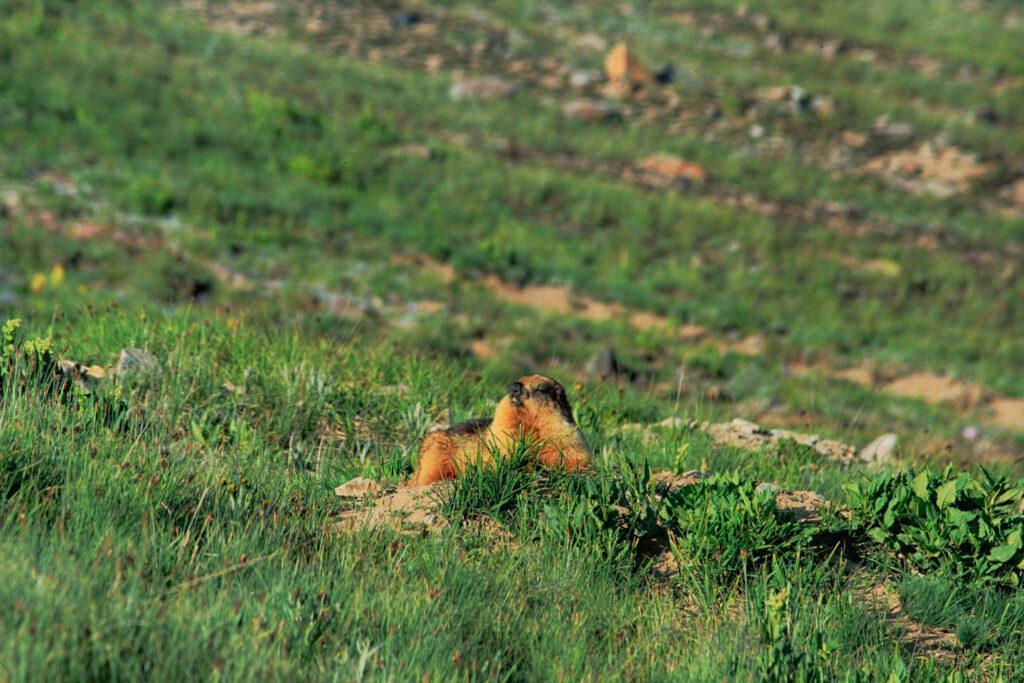
Myths about Deosai
“Deosai,” meaning “Shadow of the Giant,” is an amalgam of ‘Deo’ and ‘Sai’ meaning “giant” and “shadow,” respectively. “Deo” comes from ” Deva,” and ” Sai” is from ” Saya.”
The name was extracted from the folk-tale “Saif-al-Malook” composed by Mian Muhammad Baksh as a poem.
For centuries, nomads from Kashmir used the Deosai plains as a passage in summer to cross with their herds. The desolation of the area with no permanent population made people believe that giants haunted this place.
This led to the name ‘The Land of the Giants.’
The deafening silence in Deosai Plains spans centuries. You can experience this deep silence so much that you can hear your heartbeat. Sometimes a marmot’s whistle breaches this spell of silence.

Deosai National Park Hotels
Deosai National Park is a wilderness area in Pakistan known for its pristine landscapes and untouched beauty. As a protected national park, it has no hotels or accommodations.
However, lodging options are available in nearby towns and villages for visitors to stay and explore the park. Skardu to Deosai distance is approx 30 kilometers, offers a range of hotels, guesthouses, and campsites. Other nearby towns like Astore and Chilas also have accommodation options available. It’s recommended to plan your stay and make reservations according to your preferences and budget.
The Deosai Weather and Atmosphere
The plateau’s environment features low atmospheric pressure, oxygen, and carbon dioxide levels, high aridity, extreme cold, and intense solar radiation. Deosai plains face the monsoon affected the outer Himalayas, thus receiving higher rainfall than other adjoining valleys of Baltistan. Sudden changes in weather within no time are regular in Deosai as a bright sunny day can change into a dark stormy one in the blink of an eye, also followed by ice rain.
The unpredictable weather adds to the mystery of Deosai, as sometimes it snows in summer, and the sun often seems to play hide and seek with clouds.
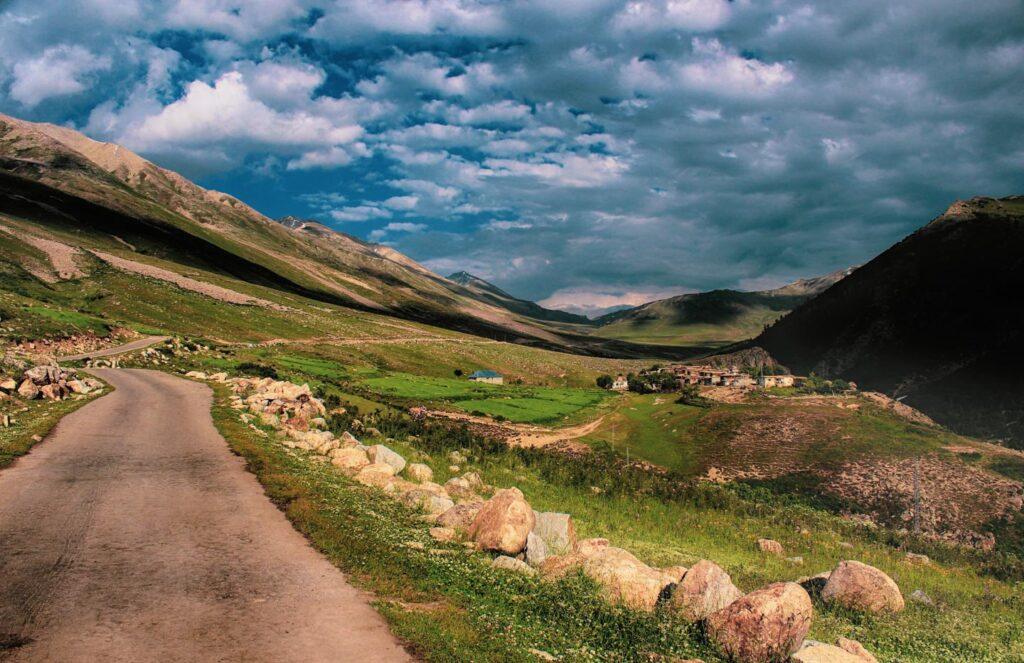
FAQs
What is Deosai famous for?
Deosai is famous for its stunning landscapes, including vast plateaus, wildflower blooms, and the presence of the endangered Himalayan Brown Bear. It’s also renowned for its unique ecosystem, biodiversity, and being one of the highest plateaus globally.
What animals can be found at Deosai Plains?
The Deosai Plains are home to a diverse range of wildlife. Some of the notable animals found in the region include the Himalayan Brown Bear, Himalayan Ibex, Gray Wolf/Himalayan Wolf, Markhor, Snow Leopard, Tibetan Red Fox, Himalayan Marmot, Himalayan Snowcock, Peregrine Falcon, Golden Eagle, Bearded Vulture, Lugger Falcon, and Musk Deer.
The park’s flora and fauna provide a rich habitat for these fascinating creatures to thrive.
What is Deosai known as, “the land of giants”?
Deosai is called the “Land of Giants” due to its vastness and high altitude, with an average elevation of over 4,000 meters above sea level. The expansive plateaus and towering mountains create a majestic and imposing landscape, giving it the name “Land of Giants.”

